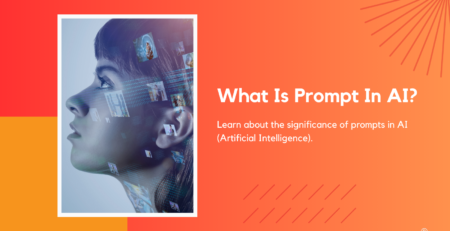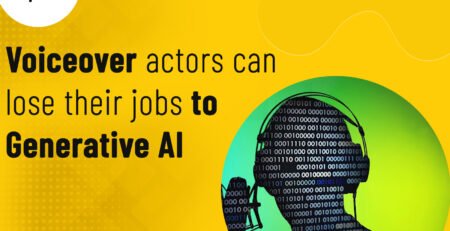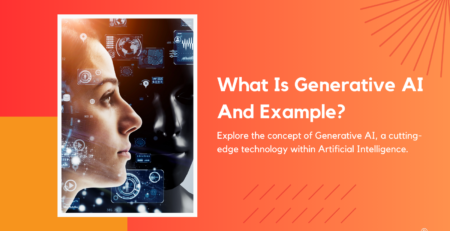Kuse AI: The Ultimate Cognitive Operating System That Transforms How You Think and Create
What Makes Kuse AI Different from Traditional AI Chatbots?
In a world where artificial intelligence tools like ChatGPT dominate conversations about AI assistance, Kuse AI emerges as a fundamentally different approach to human-AI collaboration. While conventional AI chatbots simply “spit out answers” to your prompts, Kuse AI functions as a comprehensive cognitive operating system designed to enhance your thinking processes, organizational capabilities, and creative output.
The distinction is crucial: traditional AI tools operate as question-and-answer machines, providing responses to isolated queries without understanding the broader context of your work or thought processes. Kuse AI, however, integrates seamlessly into your cognitive workflow, acting as an extension of your mind rather than just another tool in your digital arsenal.
This cognitive operating system approach represents a paradigm shift in how we interact with artificial intelligence. Instead of simply receiving pre-packaged answers, users engage with Kuse AI as a collaborative partner that helps structure thoughts, organize complex information, and build upon ideas in meaningful ways.
How Does Kuse AI Function as a Cognitive Operating System?
The Core Philosophy Behind Cognitive Computing
Kuse AI’s foundation rests on the principle that effective AI should amplify human intelligence rather than replace it. This cognitive operating system philosophy means that every interaction is designed to enhance your natural thinking patterns, help you organize information more effectively, and provide tools that support creative and analytical processes.
The platform operates on the understanding that human cognition involves multiple interconnected processes: pattern recognition, memory formation, creative synthesis, logical reasoning, and intuitive insights. By supporting each of these cognitive functions, Kuse AI creates an environment where users can think more clearly, organize information more systematically, and generate ideas more creatively.
Multi-Model AI Architecture
One of Kuse AI’s most significant advantages lies in its multi-model architecture. Rather than relying on a single AI model, the platform strategically combines several cutting-edge AI technologies:
- GPT-4.1 for advanced language processing and generation
- Claude Sonnet 4.0 for nuanced reasoning and analysis
- Deepseek R1 for specialized reasoning capabilities
- Flux Pro 1.1 + Ultra for high-quality visual generation
- Flux .1 Kontext for contextual understanding
- Gemini 2.0 Flash for rapid processing and multimodal capabilities
This diverse ecosystem ensures that different types of cognitive tasks are handled by the most appropriate AI model, resulting in superior performance across reasoning, formatting, creativity, and visualization tasks.
What is the Magic Pen Feature and How Does It Work?
Precision-Focused Content Generation
The Magic Pen feature represents one of Kuse AI’s most innovative capabilities. This tool allows users to select specific portions of content—whether a single sentence, a data table, or an entire paragraph—and generate highly focused, contextually relevant results based on that selection.
Unlike broad AI responses that attempt to address general topics, the Magic Pen feature creates laser-focused output that directly relates to your selected content. This precision ensures that generated content maintains relevance to your specific needs and integrates seamlessly with your existing work.
Practical Applications of Magic Pen
The versatility of the Magic Pen feature extends across numerous professional and academic contexts:
Content Refinement: Select a paragraph that needs improvement, and the Magic Pen can suggest enhanced versions while maintaining your original voice and intent.
Data Analysis: Highlight a specific data table or chart, and receive detailed analysis, insights, and recommendations based on that particular dataset.
Research Enhancement: Choose a sentence or concept from your research, and generate related ideas, supporting arguments, or alternative perspectives.
Creative Development: Select a creative fragment—a story opening, a design concept, or a brainstorming note—and expand it into fully developed content.
How Does DCOX Format Learning Transform Document Processing?
Understanding DCOX Technology
The DCOX (Document Context and Output eXtraction) format learning feature represents a breakthrough in AI document processing. This technology enables Kuse AI to analyze existing documents, understand their structure, format, and content patterns, and then generate new content that perfectly matches the original formatting and style.
Real-World DCOX Applications
Consider the practical scenario of processing examination papers. When you upload a messy, disorganized exam document to Kuse AI and provide specific instructions, the DCOX system analyzes the document’s structure, identifies key patterns, and generates clean, well-organized content that maintains the original format while improving clarity and organization.
This capability extends far beyond academic documents:
Business Reports: Transform rough drafts into professionally formatted reports that match company standards.
Technical Documentation: Convert scattered technical notes into comprehensive, well-structured documentation.
Creative Projects: Organize brainstorming sessions and creative notes into coherent, professionally presented materials.
Legal Documents: Structure legal research and notes into properly formatted legal briefs or memoranda.
Can You Really Chat with Any Type of File?
Universal File Compatibility
Kuse AI’s file interaction capabilities represent a significant advancement in document processing technology. The platform supports an extensive range of file types, enabling users to engage in meaningful conversations with virtually any type of digital content:
PDF Documents: Upload research papers, reports, or e-books and ask specific questions about their content, request summaries, or explore connections between different sections.
Spreadsheets: Interact with Excel or Google Sheets files to analyze data, identify trends, generate visualizations, or create detailed reports based on the data.
Web Pages: Provide URLs or upload web content to discuss articles, analyze online resources, or extract key information from websites.
YouTube Videos: Engage with video content by asking questions about specific topics discussed, requesting summaries, or exploring concepts presented in the videos.
Advanced File Processing Capabilities
The file interaction feature goes beyond simple content extraction. Kuse AI’s cognitive operating system approach means that file interactions are contextual, intelligent, and designed to support your broader objectives:
Cross-Reference Analysis: Compare information across multiple files, identifying connections, contradictions, or complementary insights.
Content Synthesis: Combine information from various file types to create comprehensive analyses or reports.
Interactive Exploration: Ask follow-up questions, request clarifications, or dive deeper into specific aspects of your uploaded content.
How Does Kuse AI Generate Ready-to-Use Documents?
From Conversation to Documentation
One of Kuse AI’s most practical features is its ability to transform conversational interactions into polished, professional documents. This capability bridges the gap between informal brainstorming or discussion and formal documentation, making it easier to capture insights and convert them into actionable materials.
Document Generation Process
The document generation process follows a sophisticated workflow:
- Context Analysis: The system analyzes your conversations, file interactions, and generated content to understand the overall context and objectives.
- Structure Identification: Based on the type of content and your specific needs, Kuse AI determines the most appropriate document structure and format.
- Content Organization: Information from various sources is organized logically, ensuring coherent flow and comprehensive coverage of relevant topics.
- Professional Formatting: The final document is formatted according to professional standards, ready for immediate use in business, academic, or personal contexts.
What Are the Key Advantages of Multi-Model AI Architecture?
Specialized AI for Specialized Tasks
The multi-model approach employed by Kuse AI ensures that different types of cognitive tasks are handled by the most appropriate AI technology. This specialization results in superior performance compared to single-model systems:
Reasoning Tasks: Leveraging Claude Sonnet 4.0 and Deepseek R1 for complex analytical thinking and problem-solving.
Creative Generation: Utilizing GPT-4.1 for creative writing, brainstorming, and innovative content creation.
Visual Processing: Employing Flux Pro 1.1 + Ultra for high-quality image generation and visual content creation.
Rapid Processing: Using Gemini 2.0 Flash for quick responses and efficient multimodal processing.
Synergistic AI Collaboration
Rather than operating in isolation, these AI models work collaboratively within the Kuse AI ecosystem. This synergistic approach means that complex tasks can benefit from the combined strengths of multiple AI technologies, resulting in more comprehensive and nuanced outputs.
How Does Kuse AI Support Different Cognitive Functions?
Memory and Organization
Kuse AI serves as an external memory system, helping users organize information, maintain context across sessions, and build upon previous work. This cognitive support is particularly valuable for complex projects that require sustained attention and development over time.
Pattern Recognition and Analysis
The platform excels at identifying patterns in data, text, or concepts, helping users recognize connections that might not be immediately apparent. This capability is crucial for research, problem-solving, and creative endeavors.
Creative Synthesis
By combining information from multiple sources and applying creative algorithms, Kuse AI helps users generate novel ideas, explore alternative perspectives, and develop innovative solutions to complex problems.
Logical Reasoning
The integration of specialized reasoning models ensures that users can engage in sophisticated logical analysis, evaluate arguments, and develop well-reasoned conclusions based on available evidence.
What Makes Kuse AI Ideal for Professional Use?
Business Applications
Professional users benefit from Kuse AI’s ability to handle complex business tasks:
Strategic Planning: Analyze market data, competitor information, and internal resources to develop comprehensive business strategies.
Report Generation: Transform raw data and insights into professional reports suitable for executive presentation.
Project Management: Organize project information, track progress, and generate status updates and documentation.
Research and Development: Support innovation processes by analyzing trends, generating ideas, and evaluating potential solutions.
Academic and Research Applications
Researchers and academics find particular value in Kuse AI’s cognitive operating system approach:
Literature Review: Process multiple academic sources, identify key themes, and synthesize findings into comprehensive reviews.
Data Analysis: Analyze research data, identify significant patterns, and generate insights for publication.
Writing Support: Organize research notes, develop arguments, and create well-structured academic papers.
Collaboration: Share findings with colleagues and build upon collective knowledge through the platform’s collaborative features.
Why Choose Kuse AI Over Traditional AI Tools?
Beyond Simple Question-and-Answer
Traditional AI tools operate primarily as sophisticated search engines or question-answering systems. While useful for immediate queries, they fail to provide the sustained cognitive support necessary for complex projects or extended creative endeavors.
Kuse AI transcends these limitations by functioning as a true cognitive partner, understanding context, maintaining continuity across sessions, and providing tools specifically designed to enhance human thinking processes.
Integrated Workflow Support
Rather than requiring users to adapt their workflows to accommodate AI limitations, Kuse AI integrates seamlessly into existing work patterns. The platform’s flexible architecture means that it can support various thinking styles, project types, and professional requirements without forcing users to learn entirely new systems or processes.
Future-Proof AI Technology
By incorporating multiple cutting-edge AI models and maintaining a flexible architecture, Kuse AI is positioned to evolve with advancing AI technology. Users benefit from continuous improvements in AI capabilities without needing to migrate to new platforms or learn new systems.
Conclusion: The Future of Human-AI Collaboration
Kuse AI represents a fundamental shift in how we conceptualize and interact with artificial intelligence. Rather than viewing AI as a tool for generating quick answers, Kuse AI positions itself as a cognitive operating system that enhances human intelligence, supports creative processes, and provides the organizational framework necessary for complex intellectual endeavors.
The platform’s multi-model architecture, innovative features like Magic Pen and DCOX format learning, and comprehensive file interaction capabilities create an environment where humans and AI can collaborate effectively on projects ranging from simple content creation to complex research initiatives.
As we move forward into an increasingly AI-integrated future, platforms like Kuse AI demonstrate the potential for artificial intelligence to serve as genuine cognitive partners, enhancing rather than replacing human intelligence. For professionals, researchers, students, and creative individuals seeking to maximize their intellectual potential, Kuse AI offers a compelling vision of what human-AI collaboration can achieve.
The question is not whether AI will play a role in our cognitive processes, but how effectively we can integrate these powerful tools into our thinking and creative workflows. Kuse AI provides a sophisticated answer to this challenge, offering a platform that truly helps users think, connect, and create in ways that were previously impossible.












